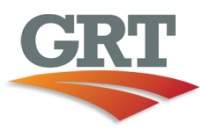
As an international company, GRT’s staff and agents see the health and safety impact of dust on mining and construction workers in all the countries that we work in.
Even in countries such as Australia and the US, where WHS regulations have been relatively strict, our understanding and appreciation of the exposure mechanisms and health impacts around dust have been poor.
The fact is that even if a dust particle is not considered hazardous – for example, coal, silica, or asbestos – if you can breathe it in (respirable) and it gets into your lungs, there is no way out. Continual exposure means this builds up and significantly impairs lung function.
A recent report produced by the US National Academies of Sciences, Engineering and Medicine and news articles around the rise of silicosis, a progressive, incurable condition so dangerous it has been dubbed ‘the new asbestos’, underlines the why behind GRT making a concerted effort to develop industry-leading dust suppression technology.
This US report recommends the mining sector undertake a fundamental shift to control dust exposure to combat a surge in lung disease from coal mine dust (both coal and silica dust are commonly generated in coal mining).
It outlines that in the US, although many mine operators are complying with the regulations relating to miner health, such efforts are not enough to help decrease future disease rates. Closer to Australia incidents of fit, young tradespeople being diagnosed with silicosis due to unsafe work practices continue to be reported, highlighting the need for comprehensive onsite strategies to mitigate dust exposure to workers.
This article underlines that dust exposure detection and mitigation need to cover all onsite workers, as well as communities living in the surrounding areas.
Added to the health effects, there are also the immediate safety hazards resulting from reduced visibility such as vehicle, plant, and pedestrian collisions and also eye damage.
This is our business – to deliver engineered, industry-leading products, and protect mine, quarry, construction, and farm workers and their communities from the impact of dust exposure.
Our commitment to perfecting these processes is underlined by the entire company undergoing a rigorous audit conducted by globally recognised compliance, standards and quality assurance firm SAI Global who specialise in technical and safety certification for an array of service, engineering, logistics and construction firms.
This approach directly aligns with the need for mining firms to go beyond compliance to protect workers from dust related respiratory disease.
Going above and beyond is a commitment that we at GRT have made to help ensure that workers and communities are protected from the effects of dust exposure.

